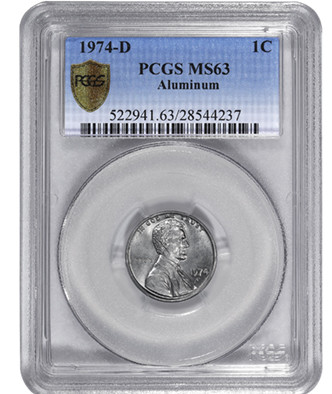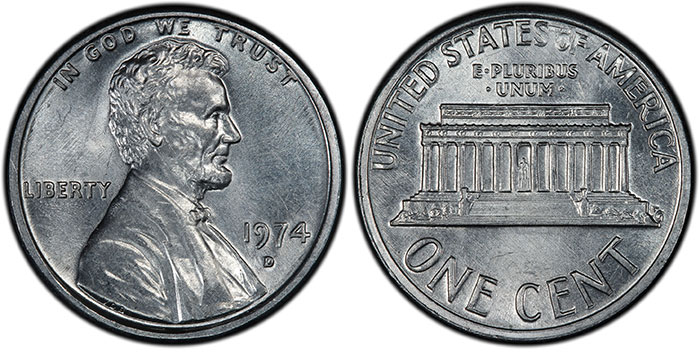1974-D Aluminum Penny Goes On Display
One of the strangest coins ever produced by the United States Mint is now going on display at the American Numismatic Association's (ANA) World's Fair of Money in California through a partnership between the mint and the Bureau of Engraving and Printing (BEP), both of which are under the umbrella of the Treasury Department.
The coin in question is the one-of-a-kind 1974-D Aluminum Lincoln Cent. The story about its origin is a bit murky, as is its chain of ownership before the U.S. government successfully sued for its return.
Mistake at the Mint?
During 1974 and 1975, mint records show that there were experimental trial pieces of pennies struck in different metals. However, these coins were never issued as legal tender and instead were distributed to members of Congress, as is often the case with test coins. The rest (presumably) were destroyed at the mint. Moreover, records show the experimental aluminum cents were struck in Philadelphia—so how did one end up at the Denver Mint? Why did it make it out to the public?
A small number of the blanks used to strike these aluminum coins were sent from the U.S. Mint headquarters in Philadelphia to Denver, possibly to test that the branch mint's dies were working properly.
The D mintmark (indicating the coin was struck at the Denver Mint) makes this aluminum Lincoln cent a unique piece. Records from the mint seem to indicate that there are about a dozen of the original aluminum cents that are unaccounted for and therefore could be in the hands of collectors somewhere.
One such example (the only other known 1974 aluminum penny) was held by the estate of Albert Tover when he passed away in 1999. Tover was an officer on Capitol Hill at the time and found the rare coin on the ground, having fallen from a congressman's pocket. He assumed it was a dime until he took a closer look at home.
Government Seizure
 Unlike the Toven specimen, whose legality has never been in question, the government claimed that the 1974-D aluminum cent was never officially released from the mint and was still the sole property of the U.S. government. After being discovered in 2013 and subsequently graded Mint State 63 by Professional Coin Grading Service (PCGS), the coin (pictured, right) was expected to realize between $250,000 and $2 million at auction in 2014. Once the government got wind of the auction, however, it filed a lawsuit to regain possession of the piece.
Unlike the Toven specimen, whose legality has never been in question, the government claimed that the 1974-D aluminum cent was never officially released from the mint and was still the sole property of the U.S. government. After being discovered in 2013 and subsequently graded Mint State 63 by Professional Coin Grading Service (PCGS), the coin (pictured, right) was expected to realize between $250,000 and $2 million at auction in 2014. Once the government got wind of the auction, however, it filed a lawsuit to regain possession of the piece.
Naturally, after the coin was returned to the feds, the possibility of seeing how much it might command at an auction disappeared, disappointing many collectors and industry insiders. The silver lining is that people can still go see the ultra-rare aluminum cent now that the U.S. Mint and BEP will allow it to be displayed at the ANA World's Fair of Money, August 9th through 13th in Anaheim.
The opinions and forecasts herein are provided solely for informational purposes, and should not be used or construed as an offer, solicitation, or recommendation to buy or sell any product.

Everett Millman
Everett has been the head content writer and market analyst at Gainesville Coins since 2013. He has a background in History and is deeply interested in how gold and silver have historically fit into the financial system.
In addition to blogging, Everett's work has been featured in Reuters, CNN Business, Bloomberg Radio, TD Ameritrade Network, CoinWeek, and has been referenced by the Washington Post.

